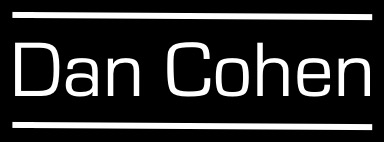[Another post in my series on our need to focus more on the “demand side” of scholarly communication—how and why scholars engage with and contribute to publications—in addition to new models for the “supply side”—new production models for publications themselves. If you’re new to this line of thought on my blog, you may wish to start here or here.]
As all parents discover when their children reach the “terrible twos” (a phase that evidently lasts until 18 years of age), it’s incredibly easy to catch your kids being bad, and to criticize them. Kids are constantly pushing boundaries and getting into trouble; it’s part of growing up, intellectually and emotionally. What’s harder for parents, but perhaps far more important, is “catching your child doing good,” to look over when your kid isn’t yelling or pulling the dog’s ear to say, “I like the way you’re doing that.”
Although I fear infantilizing scholars (wags would say that’s perfectly appropriate), whenever I talk about the publishing model at PressForward, I find myself referring back to this principle of “catching the good,” which of course goes by the fancier name of “positive reinforcement” in psychology. What appears in PressForward publications such as Digital Humanities Now isn’t submitted and threatened with criticism and rejection (negative reinforcement). Indeed, there is no submission process at all. Instead, we look to “catch the good” in whatever format, and wherever, it exists (positive reinforcement). Catching the good is not necessarily the final judgment upon a work, but an assessment that something is already quite worthy and might benefit from a wider audience.
It’s a useful exercise to consider the very different psychological modes of positive and negative reinforcement as they relate to scholarly (and non-scholarly) communication, and the kind of behavior these models encourage or suppress. Obviously PressForward has no monopoly on positive reinforcement; catching the good also happens when a sharp editor from a university press hears about a promising young scholar and cultivates her work for publication. And positive reinforcement is deeply imbedded in the open web, where a blog post can either be ignored or reach thousands as a link is propagated by impressed readers.
In modes where negative reinforcement predominates, such as at journals with high rejection rates, scholars are much more hesitant to distribute their work until it is perfect or near-perfect. An aversion to criticism spreads, with both constructive and destructive effects. Authors work harder on publications, but also spend significant energy to tailor their work to please the paren, er, editors and blind reviewers who wait in judgment. Authors internalize the preferences of the academic community they strive to join, and curb experimentation or the desire to reach interdisciplinary or general audiences.
Positive-reinforcement models, especially those that involve open access to content, allow for greater experimentation of form and content. Interdisciplinary and general audiences are more likely to be reached, since a work can be highlighted or linked to by multiple venues at the same time. Authors feel at greater liberty to disseminate more of their work, including material that is half-baked and work that is polished, but audiences may find even the half-baked to be helpful to their thought processes. In other publications that “partial” work might not ever see the light of day.
Finally, just as a kid who constantly strives to be a great baseball player might be unexpectedly told he has a great voice and should try out for the choir, positive reinforcement is more likely to push authors to contribute to fields in which they naturally excel. Positive reinforcement casts a wider net, doing a better job at catching scholars in all stations, or even outsiders, who might have ideas or approaches a discipline could use.
When mulling new outlets for their work, scholars implicitly model risk and reward, imagining the positive and negative reinforcement they will be subjected to. It would be worth talking about this psychology more explicitly. For instance, what if there were a low-risk, but potentially high-reward, outlet that focused more on positive reinforcement—published articles getting noticed and passed around based on merit after a relatively restricted phase of pre-publication criticism? If you want to know why PLoS ONE is the fastest-growing venue for scientific work, that’s the question they asked and successfully answered. And that’s what we’re trying to do with PressForward as well.
[My thanks to Joan Fragazsy Troyano and Mike O’Malley for reading an early version of this post.]

Leave a Reply
You must be logged in to post a comment.